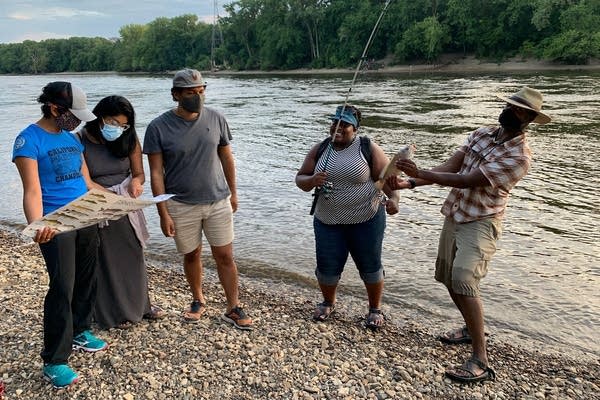A push to make Minnesota’s outdoors more inviting and accessible to people of color

Participants in St. Paul Parks and Recreation's BIPOC Park Ambassadors program reeled in a fish on the Mississippi River last August. The program invites people of color to outdoor activities led by people of color.
Courtesy of Asha Shoffner
Go Deeper.
Create an account or log in to save stories.
Like this?
Thanks for liking this story! We have added it to a list of your favorite stories.


